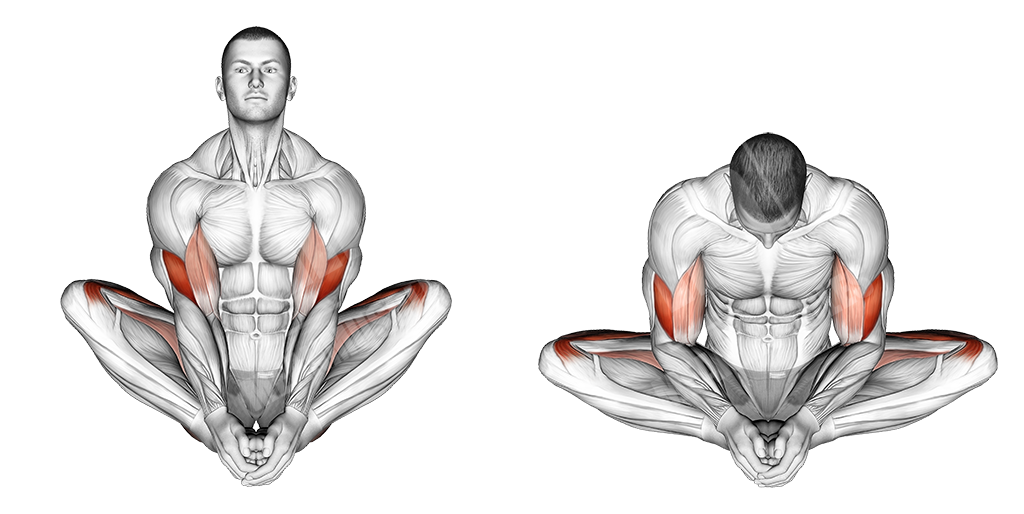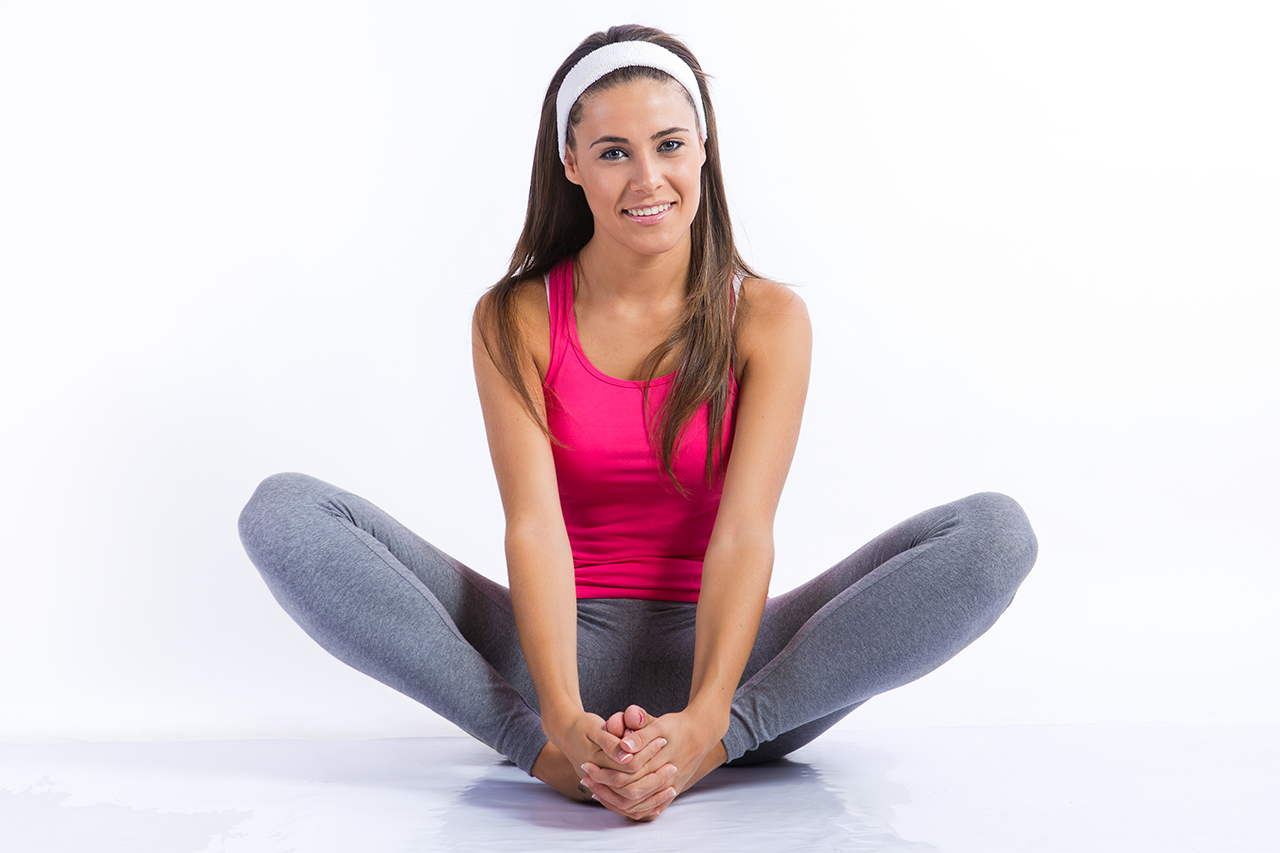There is a wide variety of physical activities that you can take on, to improve your overall health and well-being.
Some of the activities focus on endurance, others on strength and third, are a combination of strength and endurance exercises.
However, there is one group of exercises that helps us improve the even more important physical qualities like flexibility, coordination and balance.
These exercises are simply based on the bio-mechanical stretching principles.
Depending on the intensity of the stretch, there are a couple of stretching methods-
- Static stretching
- Dynamic stretching
- Ballistic stretching
- Proprioceptive stretching
To clear any misunderstandings for these four types of stretching, we will go through the bio-mechanical principles behind each of them.
Static Stretching
This is one of the most popular stretching methods, that helps improve the musculature’s ability to stretch out to a bigger extent.
This type of stretching can be an active, self-induced stretch or a passive stretch where you can use a partner or specialized gym equipment to help you stretch out.
The stretch begins in a comfortable position that stretches out the muscle, and from then on, we carefully apply tension by pushing.
After reaching the end of the movement, you hold the stretched position for up to 20 seconds, after which you slowly relax to the original position.
Rest times between each set of stretching is no longer than 15-25 seconds.
Force applied during the stretch should be considered subjectively.
Control the movement and be aware of it. Don’t apply too much force during the stretch, as you might feel sharp pain, caused by tearing of soft tissues.
Avoid sudden, explosive stretching.
Pain during stretching is a highly undesirable effect and is a sign that the movement has been done incorrectly and/or beyond the individual’s capabilities.
During the movement, breathing should be controlled.
Safety
If you don’t properly warm up before getting into the stretching exercises, you might experience pain or old injuries coming up. This might be caused by stretching on a cold musculature, incorrect positioning during the stretch, incorrect movement or excessive force applied.
Application
The static method of stretching is quite convenient as it’s a simple and easily doable one. It leads to a very small energy expenditure and the only other requirement for the individual is to focus on the stretch and mind-muscle connection.
This method is appropriate to use for musculature recovery after the strength workout in the gym.
Dynamic Stretching Method
Dynamic stretching consists of controlled movements, progressively increasing in force and speed, so that the joint involved in the stretch gradually reaches its full range of motion.
The name of this method implies the use of some kind of force. This force is isotonic, meaning that the muscle contracts and stretches without additional force, but under the force of gravity.
The goal with this type of stretching is catching the full range of motion of the joint, with the agonistic muscle group being contracted and its antagonist under isometric tension or relaxed.
Agonist and antagonist muscle group- Two opposite muscle groups that have opposite functions- e.g.- Biceps/triceps, Chest/back
Applying this stretching method without having an active antagonist is least effective and is a premise to injury.
So, if you lean forward from a seated, straight-leg position, your quadriceps will contract, while the hamstrings are stretched.
The more you increase the quadriceps’s activity, the deeper hamstring stretch you would get and the risk of excessive stretching is lower, compared to doing the same thing with a relaxed quadriceps.
It is recommended that you stretch for about 10 to 20 seconds at a time with this method. Rest times between each stretch is no longer than 30-40 seconds.
Safety
Dynamic stretching is also easy to do and doesn’t require a training partner or any special equipment. However, the individual needs to carefully control the movement and force applied.
As we mentioned, if the force applied is excessive, it’s possible to over-stretch the muscle group, which may lead to micro traumas in the tendons and connective tissues.
Ballistic Stretching
Ballistic stretching uses the inertial forces of certain parts in the body to stretch them beyond their usual range of motion, after which they return to their initial position
An example of such stretch would be the so-called ‘butterfly stretch’, where you sit down with your heels together and knees pointing to the sides, then lean forward and apply force with your torso.
Ballistic stretching however, should not be confused with dynamic stretching, as the main difference between them is that the first one helps achieve a better muscle contraction, compared to dynamic stretching which helps improve flexibility to a bigger extent.
Safety
The risky thing with ballistic stretching is the use of inertial forces. Often times, the force applied may not be appropriate and is hardly controllable for the individual, which therefore leads to inability to stop the movement at the right time, due to the excessive acceleration of the body part.
Application
Ballistic stretching is used in many sports, by professional athletes. This method tones the musculature, which can also hinder their flexibility, however, adequately using it can improve your musculature so that the overall mind-muscle connection is better.
This method is not recommended for beginner trainees.
Proprioceptive Stretching
There are a couple of proprioceptive stretching techniques, but generally, this is a passive stretching method that combines a contraction of the muscle, followed by another stretch, which can be static or dynamic.
By combining the passive stretch with static muscle engagement (with a partner or gym equipment, that causes resistance), the neuromuscular stretch uses the stretching reflex and a change in the muscle length accordingly, to achieve a bigger range of motion.
Technique 1
ISOMETRIC TENSION, RELAX, STRETCH
The muscle is stretched beforehand, to a point where the movement is limited by tendons, antagonist muscle groups and connective tissue. After that, you apply resistance, during which the joint is static and the two ends where the muscle attaches, don’t get close to one another. The goal here is to achieve the biggest isometric tension possible.
This causes a reaction in the sensory organs, after which, a slow decrease in tension follows up. After that point, gradual increase in the tension upon the muscle group is applied to achieve higher levels of flexibility.
Example

We can use the butterfly stretch again, as an example. During this stretch, the arms push down to open up the legs as wide as possible, while the legs push up to resist the force of your pushing arms. Doing this, the muscles are in the so-called ‘isometric tension’. After a short break of up to 3 seconds, you push your legs down to stretch them as much as possible.
Technique 2
ISOMETRIC TENSION, RELAX, ANTAGONIST, CONTRACTION, STRETCH
This technique uses the stretch of the antagonistic muscle group.
You start off with isometric tension (e.g. in the hamstrings), after which you relax it. After a new contraction of the antagonist, we aim to increase the movement in the joint by stretching out the hamstring.
The antagonist’s contraction relaxes the agonist (the stretched muscle group).
The strength of the stretching push should be well dosed and pain should not be reached.
Example

Lay down and lift one of your legs with the knee being extended till the leg is at a 90-degree angle- At this point, the quadriceps contracts, while the hamstring is stretched.
After that, the hamstring is relaxed for 2-3 seconds.
What follows up is a phase of hyperextension of the stretched muscle, where the antagonist remains passive and the hamstring is in a passive extension.
This stretch is best completed with a partner who applies further tension during the last part of the muscle stretch.
Safety
To avoid injury, follow the safety guidelines of static stretching- Adequate warm up beforehand, so that the musculature is ready to stretch.
Adequate force applied, during the stretching phase.
Application
Proprioceptive stretching is a method that improves flexibility and posture, and finds a wide variety of applications in the work of rehabilitation centers.
This method is appropriate for when the goal is improving static and dynamic flexibility, meaning that any type of martial artists can benefit from it.
The conclusion here is that depending on the goal of our workouts and our level of physical training, we should carefully pick the type of stretching that would best improve our sport results.
All exercises should also be adequately picked and precisely executed.
Just like any type of physical activity, stretching exercises also put us at a risk of injury, which, of course is far lower compared to that of weight lifting workouts.
However, we should still be focused and completely aware of the stretching movements, to avoid any bio-mechanical errors.

